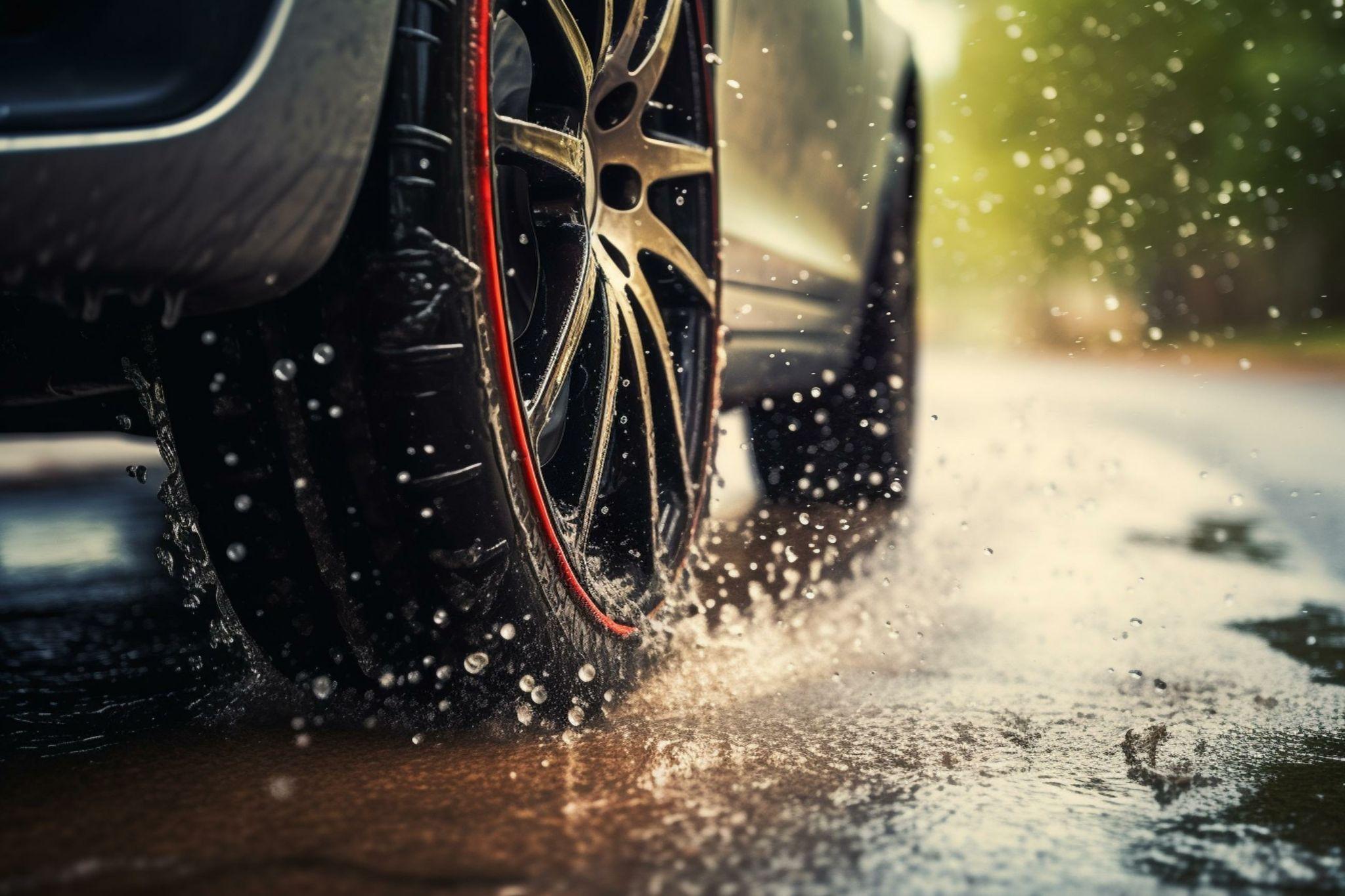
What is hydroplaning, and how can it be prevented? Learn what to do if you hydroplane while driving in wet conditions.
What Is Hydroplaning?
Hydroplaning describes what happens when a vehicle loses traction on a layer of water, which prevents the tires tread from making contact with the roadway. Suddenly losing control of your car at highway speeds can feel terrifying, but there are steps you can take to prevent hydroplaning and regain control of your vehicle if it happens.
What Causes a Car to Hydroplane?
There are four factors that can cause hydroplaning on wet roads. These are:
- Standing water on the road. With as little as 1/10th of an inch of standing water on the road, there is a risk of hydroplaning. Heavy rainfall and poorly angled road services or blocked drainage systems can leave deep water in your path.
- Speed of travel. The faster you are driving, the easier it is to start hydroplaning or sliding on the surface of the water layer. Especially with low tread tires, you are at risk of hydroplaning at 35 mph when driving in the rain.
- Tire tread depth. Driving on bald or badly worn tires can cause your vehicle to hydroplane on an even thinner layer of water. Some types of tires are designed to channel and direct water away to better maintain traction in wet conditions.
- The weight of your vehicle. The heavier your vehicle is, the more pressure it applies to the road surface through your tires, and the less likely you are to hydroplane. If you drive a lighter vehicle, you will need to be more careful to avoid puddles and standing water.
What to Do if You Hydroplane

- Remain calm and take your foot off the accelerator or turn off the cruise control.
- Avoid slamming on your brakes and do not try to turn your vehicle if it starts to hydroplane.
- Hold the steering wheel steady and wait for your tires to restore traction so that you can regain control of the vehicle.
How to Prevent Hydroplaning
- Keep in mind that with a sudden speed increase, your vehicle can start to hydroplane.
- Front wheel drive and rear wheel drive vehicles can both experience hydroplaning.
- You can avoid hydroplaning by slowing down in wet conditions and not using cruise control when there is standing water on the roadway.
- Plan for greater stopping distances when it is raining or slippery.
- Replace worn tires promptly and properly inflate your tires so that water-deflecting tread patterns will work properly.
- Watch for vehicles in front of you leaving tracks in water on the road, and slow down if you observe other vehicles hydroplaning.
Learn to Drive Safely in All Weather Conditions
Learning the essential driving skills that will help keep you and other drivers safe starts with a quick and affordable online defensive driving or driver improvement course from Ticket School. These courses are available on any internet enabled device including smart devices and are approved by many states for ticket removal or point reductions on your driving record.
Most importantly, a driver improvement course from Ticket School can help you learn the tips and tricks that will prevent hydroplaning and help you keep control of your vehicle in all types of weather conditions. Enroll today and drive safely through the changing seasonal weather!
